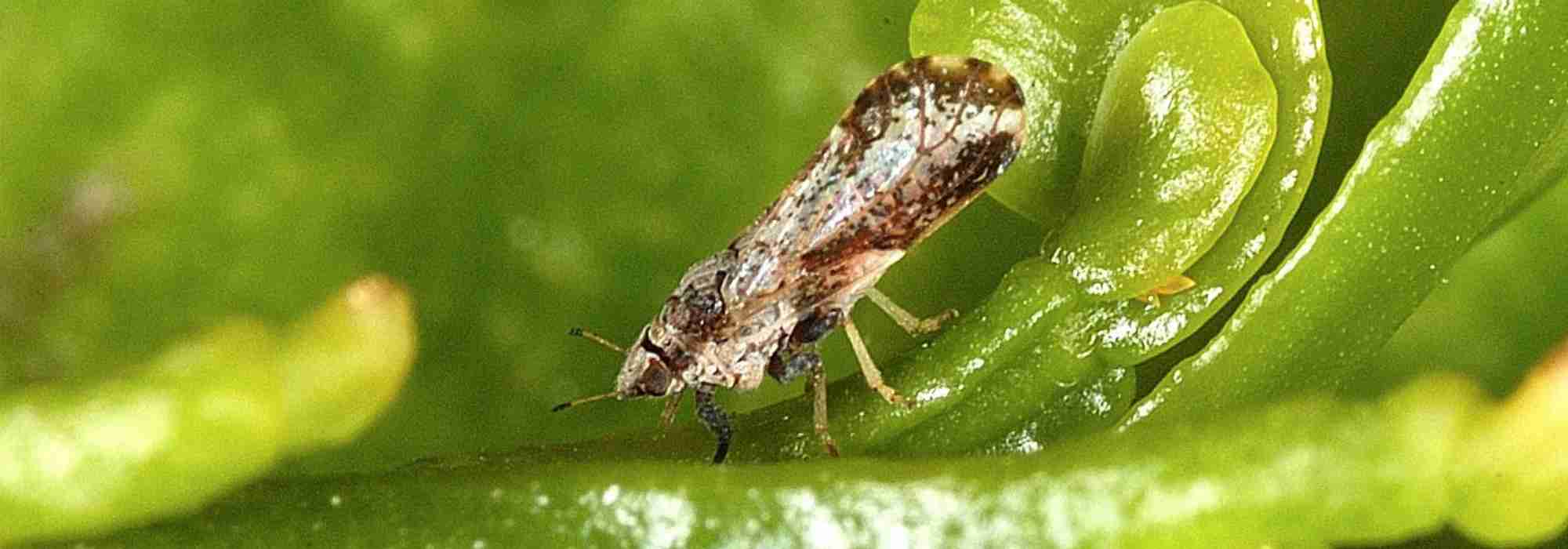
How to get rid of psyllids?
Prevention, control and natural treatments
Contents
Psyllids are winged piercing-sucking insects, similar to aphids, which attack many fruit or ornamental trees (the olive psyllid being well known), as well as herbaceous plants such as carrot and leek. Adults, but especially larvae, are very voracious and suck sap, producing honeydew and wax that make leaves sticky, deform them and sometimes lead to death of young plants. Discover our tips to protect against them and to fight effectively and naturally.
Which species are susceptible to psyllids?
Psyllids belong to family of cicadas and aphids and are often quite specific to a host plant or group of host plants such as :
On fruit trees:
- Olive psyllid on olive tree (Euphyllura olivina),
- Pear psyllid on pear tree (Cacopsylla pyri),
- Apple psyllid on apple tree (Cacopsylla mali),
- Citrus psyllid on citrus trees (Diaphorina citri),
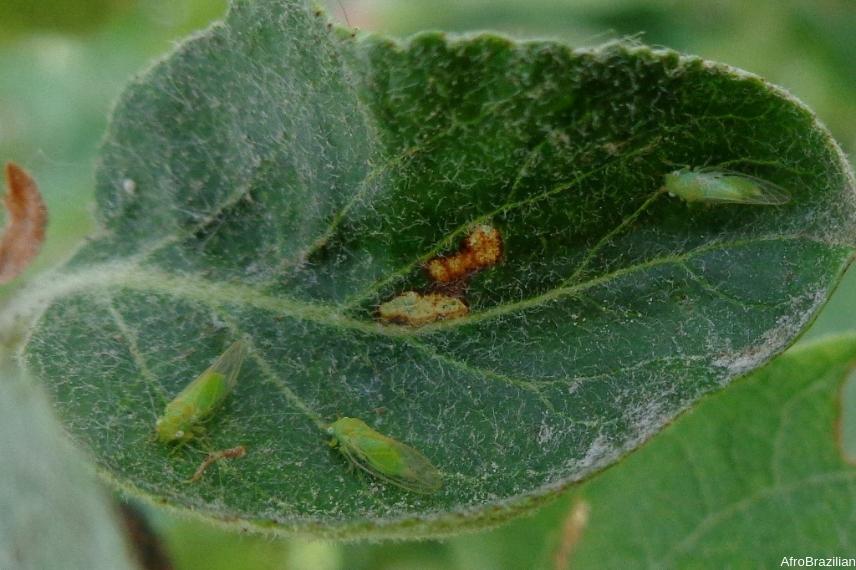
Apple psyllid
On ornamental trees, shrubs and bushes:
- Boxwood psyllid on boxwood (Psylla buxi)
- Elaeagnus psyllid on Elaeagnus or oleaster (Cacopsylla fulguralis)
- Bay laurel psyllid on bay laurel (Trioza alacris)
- Albizia psyllid on albizia (Acizzia jamatonica)
- Ash psyllid on ash (Psyllopsis fraxini)
Other species are known to be susceptible: acacia, hawthorn, mimosa, eucalyptus, Cercis, Rhamnus, Citrus, Ficus.
Among vegetables:
- Carrot psyllid (Trioza apicalis),
- Leek and white onion psyllid (Bactericera tremblayi)
- Potato psyllid (Bactericera cockerelli), currently confined to North America, Guatemala and New Zealand
Read also
Aphid: identification and treatmentHow to recognise psyllids?
The psyllid belongs to the family Homoptera like the cicada and the aphid but unlike the latter, males and females keep their wings throughout adult life. These insects, 2 to 6 mm long, still move by jumping – they are nicknamed “leaf fleas” – with forewings that at rest form a roof. Equipped with long antennae and a head clearly distinct from the body bearing a rostrum as mouth, they pierce the epidermis of the leaf and suck sap.
- They secrete masses of wax filaments and honeydew, which make the surface sticky and covered with sooty mould: black dust caused by a non-parasitic fungus that blocks light and prevents plant tissues from breathing. Combined action of sooty mould and the psyllid causes leaf deformation with blistering or rolling, eventually leading to leaf drop and sometimes plant death.
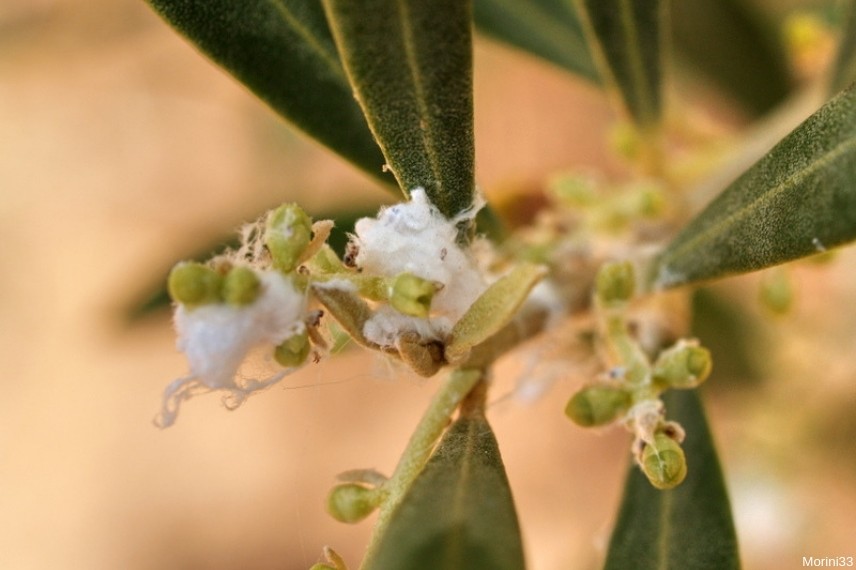
Mass of wax filaments secreted by psyllids
- More easy to observe than adults, psyllid larvae measure a few millimetres and are even more voracious than adults. They resemble tiny flattened slugs in yellow, brown or green that bear anlagen of wings on their backs and are little mobile. They concentrate beneath leaves and in some species coat themselves in honeydew to protect against external attacks.
- Presence of ants climbing up the trunk indicates presence of honeydew which can be produced by other sap-sucking insects such as aphids. Honeydew deposited on buds gives them a scorched appearance while young shoots curl, deform or even desiccate.
- On white onion and leek, larvae cause foliage desiccation and produce a toxic honeydew that “burns” leaves, sometimes accompanied by sooty mould. On leek, yellow streaks at the base of the bole lead to leaf desiccation that can result in total loss of the young plant.
- On carrot, the psyllid Trioza apicalis overwinters as an adult on various conifers and migrates to vegetable crops in spring. It causes severe damage to seedlings, provoking leaf curling and arrest of growth by injecting a toxin. Larvae from the eggs no longer produce this toxin and their impact is lower, especially as there is only one generation per year.
- A yellow mosaic-like pattern may mark the surface of the lamina,
- Plant growth is slowed.
- Fruits can become soiled and therefore difficult to market.
- On alder and box, a whitish downy coating covers larvae on shoots and underside of leaves.
- On albizia, the psyllid Acizzia jamatonica yellow-green (brown in autumn) produces honeydew contained in small frosted beads that burst and heavily soil cars parked below when foliage drops.
Note : Plant death sometimes results from inoculation of a virus by the psyllid, as is the case for pear trees infected by a phytoplasma.
Factors favouring psyllids
Predicting psyllid attacks is quite difficult because of large number of species. Damage also depends on presence or absence of natural predators of the insect.
La egg-laying occurs in spring, sometimes in winter, close to buds so larvae subsequently feed on young leaves. Different generations follow one another throughout the year and sometimes even overlap.
Repeated treatments targeting only adults prove useless. Overlap of cycles, and in particular presence of eggs, allow attack to continue. Adults or eggs overwinter in bark or on host plants different from infected plants.
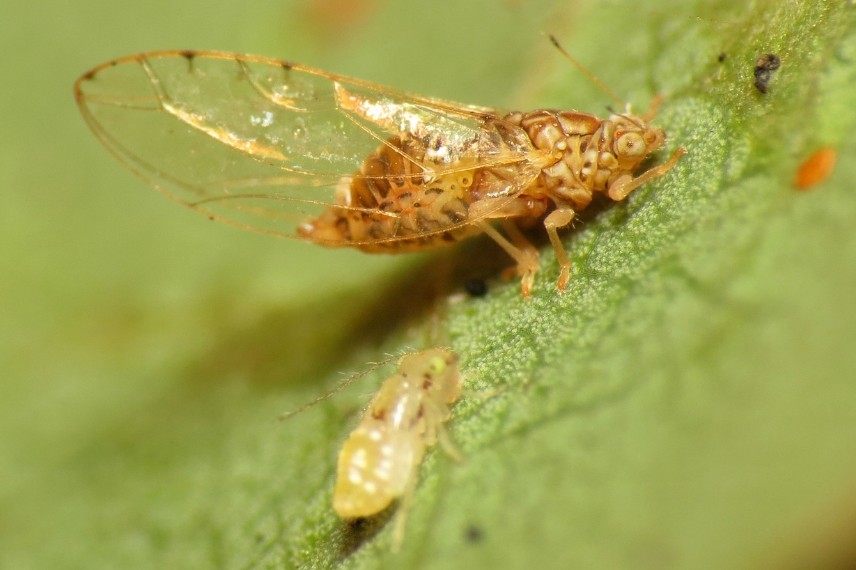
Psyllid (Trioza alacris) on Laurus nobilis (photo Katja Schulz)
Control and treatment of psyllids
- Inspect undersides of leaves from early spring until early summer and try to dislodge larvae with a jet of water.
- If leaves are sticky because of honeydew, spray a solution of black soap (3 tbsp liquid black soap in 1 l of water) as for aphids, repeat every 15 days. You can also use pyrethrin, a natural insecticidal product authorised in organic farming. Avoid in any case treating during foraging hours; wait until sun has set.
- Above all, encourage beneficial fauna (ladybird, hoverfly, lacewing, anthocorids…) whose larvae, sometimes even adults, feed on psyllids. To do this, plant hedges or mixed beds of flowering bushes or sow melliferous prairies.
- Introduction of small predatory bugs Anthocoris nemoralis (4 mm long) can support action of natural enemies already present.
- If infestation is already well advanced, cut and burn contaminated shoots.
- Avoid excess nitrogen in soil which weakens plant against attacks.
- Install a fine-mesh insect filament over vegetable plants such as carrots and leeks,
- Sow early carrot varieties because young plants already developed resist psyllid attacks better.
- Yellow sticky traps allow estimation of psyllid arrival but can also trap other insects. Do not overuse them.
- You can also apply an oil (rapeseed, castor, paraffinic mineral) (3.6 ml/m²) in late winter – from January on pear to eliminate adults emerging from hibernation and laying about a month later, late April–early May on boxwood – to eliminate eggs or other overwintering forms present in crevices of the bark (Judas tree, apple). Eggs hatch after about 3 weeks and damage becomes visible on foliage after 15 days.
- Talc is an authorised preventive measure on fruit trees to repel psyllids at 30 g/l for first application, then 20 g/l for subsequent applications, spaced 3 to 4 weeks apart. (source 2019 ITAB Institute of Organic Agriculture and Food).
Possible confusions
Punctures and presence of honeydew on leaves can be caused by other piercing-sucking insects such as thrips, leafhoppers or aphids.
For example, on onions and leeks, thrips create silvery patches along foliage and shrivelling of the tips. Elongated insects about 1 mm long are brownish in winter, then orange in summer. Yellowish eggs and larvae of thrips are hard to spot while eggs of the psyllid Bactericera tremblayi are orange and attached by a thread to the leaf.
On pear trees, an attack by purple aphids causing leaves to curl is often followed by an invasion of psyllids that transmit a virus. It is therefore important to thoroughly disinfect your cutting tools when moving from one pear tree to another.
- Subscribe!
- Contents
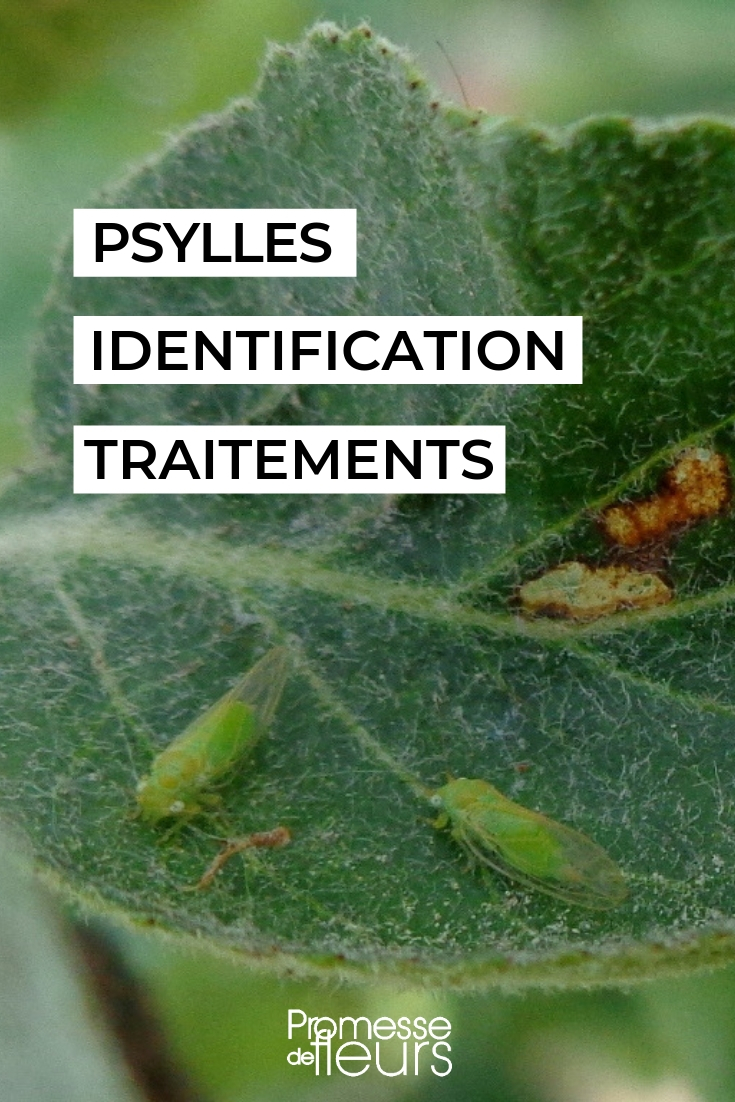































Comments